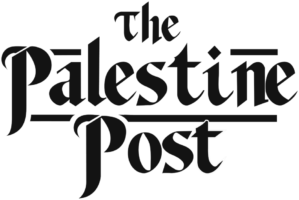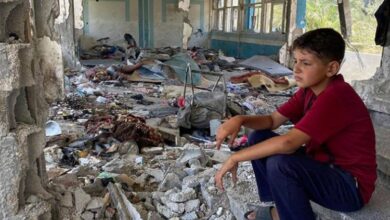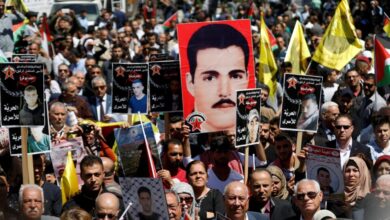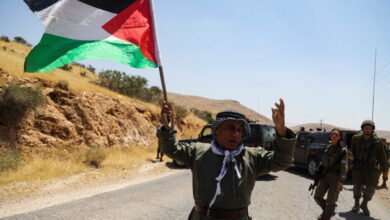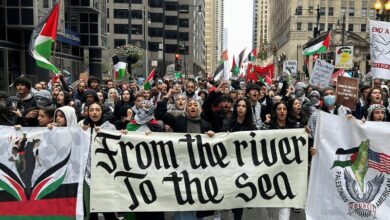Life Under Occupation: A Day in the Life of a Palestinian
Witness the everyday realities of Palestinians living under military occupation

Occupation : Imagine living in a closed circle drawn by someone else, a person who controls the water you drink and the amount of fuel that will get you to work. This individual dictates the services available to you and sets limits on the rights you should enjoy. They determine who you are allowed to meet and have authority over your movements within the borders of your city.
If you choose to move, you won’t feel safe for your life. Or, for instance, picture yourself sitting on a quiet evening with your family, exchanging conversations and recalling memories, when suddenly armed individuals burst in, turning your home upside down and taking your father, mother, or even you away. Can you imagine that? How would you endure having your freedom suffocated to such an extent or facing various forms of racism simply because you are Palestinian living under the Occupation?
Palestinians have faced significant challenges for 76 years, beginning with the Palestinian Nakba in 1948 and continuing with intensity even after October 7. These challenges have resulted in the displacement of thousands of residents from their original homes, destruction of houses, and total occupation of the land.
Over the years, the situation has not only involved the occupation of territories but has also extended to attempts to make your identity lost, along with ongoing violence and strict restrictions on daily life. In this context of life under Occupation, Palestinians demonstrate an extraordinary ability to adapt to harsh conditions, continuing their struggle for their rights in the face of injustice and holding onto the hope for change.
What Does Life Under Occupation Look Like?
Restrictions on Movement and Travel
The text of the interim agreement regarding the West Bank and Gaza Strip (Oslo II) between the occupation forces and the Palestine Liberation Organization, signed on September 28, 1995, was designed as a transitional period of five years. It involved dividing the Palestinian territories into three distinct areas in the West Bank: Areas (A), (B), and (C), each with different security and administrative arrangements that impose restrictions on movement. The division is as follows:
- Area (A): Fully under Palestinian control, primarily consisting of urban areas (cities and towns such as Hebron, Ramallah, Nablus, Tulkarem, and Qalqilya). This area has the authority to maintain internal security and features patrols from the Palestinian Authority’s police in the streets.
- Area (B): Under Palestinian civilian control and Israeli security control, consisting of villages adjacent to the cities located in Area (A).
- Area (C): Completely controlled by the Israeli military, Area (C) includes settlements, roads, and strategic zones adjacent to “Israel.” It is home to about 150,000 Palestinians in over 500 communities and approximately 325,000 Israeli settlers in more than 200 settlements. This area contains 63% of the most fertile and resource-rich lands in the West Bank, including most of the Jordan Valley, which has the largest reserve of uninhabited land and a significant portion of its natural resources, all under the conditions of occupation.
After the division of the Palestinian territories, the occupation forces imposed strict movement restrictions to control the daily lives of Palestinians. These restrictions limit their movement within occupied lands, between Gaza and the West Bank, and even restrict their ability to travel abroad. Through these controls, the Israeli occupation limits the freedom of Palestinians, while settlers and other residents move freely. This situation forces Palestinians to live in instability, making it difficult for them to carry out basic tasks or plan their lives.
After the division of this Palestinian territories, the occupation forces imposed strict movement restrictions to control the daily lives of Palestinians. These restrictions limit their movement within occupied lands, between Gaza and the West Bank, and even restrict their ability to travel abroad. Through these controls, the Israeli occupation limits the freedom of Palestinians, while settlers and other residents move freely. This situation forces Palestinians to live in instability, making it difficult for them to carry out basic tasks or plan their lives.
Military Checkpoints and Inspections
According to data from the United Nations Office for the Coordination of Humanitarian Affairs (OCHA) in January 2017, there are 98 checkpoints across the West Bank, including 59 permanent ones within the West Bank itself and 18 in Hebron. OCHA, a UN agency, tracks and reports on humanitarian issues affecting people in conflict areas, including the impact of occupation on Palestinians.
Some checkpoints are staffed by security forces at all times, others only during the day or for specific hours, and some checkpoints have no security presence. The inspection process varies from one checkpoint to another, but most inspections are conducted randomly. Additionally, 39 of the checkpoints serve as entry points to Israel, and there were 2,941 temporary checkpoints along West Bank roads.
Israel has also built a network of alternative roads for Palestinians only, called “Fabric of Life” roads, constructed on lands taken from Palestinians. This network includes tunnels and bypass roads that prevent direct connection between Palestinian towns, making it easier for the occupation to limit movement between different areas of the West Bank.
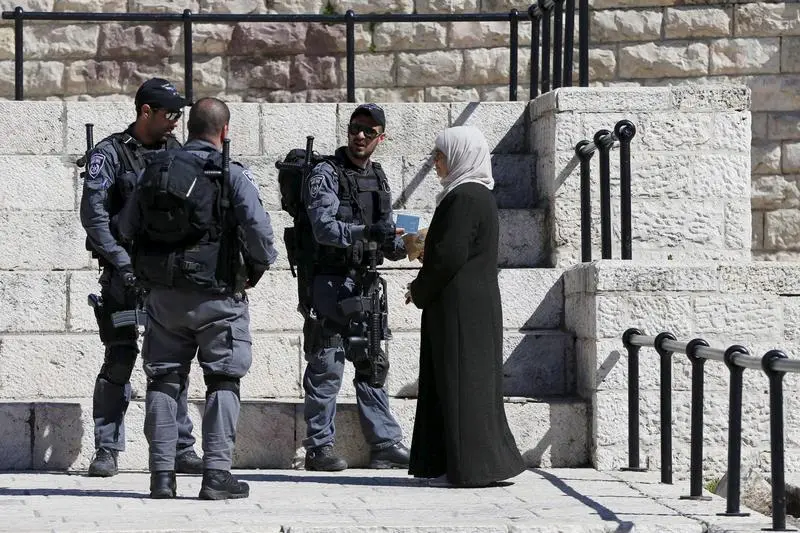
Permits and Entry Permissions
To further restrict movement, Israel established a permit and entry permission system, which prevents Palestinians living in the occupied territories from entering Israel, including Jerusalem, without official permits. These permits are required regardless of the reason for entry, whether for work, medical treatment, family visits, or other purposes. Additionally, Palestinians need a permit to pass through Israeli-controlled borders to travel between the West Bank and Gaza. As part of its blockade policy, Israel rarely grants these permits to Gaza residents, only allowing them in extremely rare cases.
When applying for a permit, applicants do not know the chances of approval or rejection, and many requests are denied without explanation or a clear response time.
Historically, when Israel occupied Gaza in 1967, its military declared Gaza a closed military area, restricting entry and exit. This restriction remained until 1972 when the military commander granted a general permit allowing residents to travel to the West Bank and Israel without specific approval. However, permits are still required for many aspects of life, including building homes. Permits for construction are granted rarely, and many people build without them, only to face forced demolition later and pay high demolition fees.
According to the United Nations, Israel has demolished at least 10,700 Palestinian-owned buildings in the occupied West Bank, displacing over 16,000 people since 2009.
The Palestinian Economy Under Israeli Occupation
Since the start of the Israeli occupation, the Palestinian economy has been fully controlled by Israel. Military orders have set the framework for its activities and directions, aiming to make the Palestinian economy dependent on the Israeli economy. As a result, the Palestinian territories have become an important market for Israeli goods and a source of skilled, low-cost labor.
The Palestinian economy, especially in Gaza, has faced significant challenges. Since the full blockade imposed by Israel in 2007, Gaza has suffered from a severe lack of basic needs due to its isolation from the outside world. This has negatively affected many economic aspects. Reports show that Gaza’s economy is in a continuous recession, with declining gross domestic product (GDP), lower government spending, and reduced investment because of ongoing blockades and repeated attacks. There has also been a drop in external support for development projects and UNRWA.
According to the Central Bureau of Statistics (2024), the strict restrictions imposed by Israel on the movement of Palestinians and their resources have led to high unemployment rates in Palestine, making it one of the highest in the world. In the fourth quarter of 2023, unemployment reached about 46%, with a significant difference between the West Bank at 29% and Gaza at 74%. Unemployment in Palestine increased from 25.5% in 2022 to 30.7% in 2023, affected by the Israeli attacks.
Israel has significant control over Palestinian financial resources through mechanisms like taxes collected on behalf of the Palestinian Authority. The Authority has governed parts of the West Bank since the 1990s. Israel collects about $188 million each month in taxes for the Palestinian Authority, which is around 64% of its total revenue. However, Israel has frequently stopped these payments, making it difficult for the Palestinian Authority to pay the salaries of about 150,000 employees in the West Bank and Gaza.
Settlement Expansion and the Separation Wall in Palestine
Settlement expansion in Palestine is a serious violation of Palestinian rights. Israel takes Palestinian land in many ways, such as using it for military purposes or building settlements. This expansion reduces the land available for Palestinians and threatens their existence on their own land. Over time, Israeli settlements have taken up large areas that were historically part of Palestine, making life harder for Palestinians and limiting their economic and social opportunities. Recently, the area of land declared as “state land” by Israel has increased to 23.7 square kilometers.
Israel has also set up buffer zones in 11 locations in the West Bank, preventing Palestinians from accessing hundreds of dunams (one dunam equals 1,000 square meters) of agricultural land. To this day, Israel continues to stop Palestinians from harvesting olives, which is an important cultural practice for their identity. The actions of settlement expansion and displacement significantly impact the Palestinian identity, as the occupation tries to suppress both their land and identity.
Recently, the Israeli organization “Peace Now” reported that Israel approved the largest land confiscation in the West Bank in over three decades. This move is likely to increase tensions related to the ongoing war in Gaza.
The separation wall
The separation wall is a major symbol of Israeli occupation. It aims to separate Palestinians from their land and isolates villages and cities from one another. This wall does not just create a physical barrier; it also makes life socially and economically difficult for Palestinians. It restricts their movement and limits their access to essential services and markets. As a result, the space for daily life shrinks, and Palestinians face challenges in moving around, leading many to seek a better life elsewhere.
Overall, settlement expansion and the separation wall are not only local challenges but also clear violations of international law and human rights. There is an urgent need for international action to stop these unfair policies and work towards justice for Palestinians.
Restrictions After October 7: Impact on Palestinians
The October 7 war on Gaza has impacted not only Gaza but also Palestinian life throughout all occupied territories. Restrictions have tightened, leading to increased arrests and detentions. In response, Israeli forces intensified their presence in the West Bank and East Jerusalem, claiming to “enhance security.” This includes widespread arrests of Palestinians deemed “threats,” additional checkpoints, and growing settler activity in various Palestinian areas, leading to frequent assaults on Palestinians.
These actions have made the future of Palestinian communities even more unstable, especially in the West Bank and East Jerusalem, where evictions of Palestinians from their homes have become more frequent. Job opportunities for Palestinians have suffered greatly, with the International Labor Organization (ILO) warning that, if the war on Gaza continues until June, unemployment rates in Palestinian territories could reach over 45%, up from 25% during the same period last year.
Forced displacement, which remains one of Israel’s primary goals, is a deep fear for Palestinians, particularly those in the West Bank. Israel sees moving Palestinians to other countries as a solution, though many nations oppose this, supporting the Palestinians’ right to remain on their land and return to areas from which they were displaced.
These restrictions significantly add to the stress and psychological pressure on Palestinians, worsening their lives beyond pre-October 7 conditions. Palestinian life has become more challenging due to limited resources like water and electricity, which are controlled by Israel. The education sector is also affected, with many Palestinian parents fearing for their children’s safety when sending them to school, unsure if they will return home safely.
